Table of Contents
Looking to build your dream home gym without emptying your wallet? You're not alone. Many fitness enthusiasts are turning to second hand home gym equipment for sale as a smart, budget-friendly alternative to buying new. But navigating the world of used gym gear can be tricky. Where do you find reliable equipment? What should you look for to ensure quality and safety? And how do you set it all up once you've made your purchase? This article is your ultimate guide to scoring the best deals on second hand home gym equipment. We'll explore the benefits of buying used, highlight top brands to consider, and provide essential checklists to help you avoid common pitfalls. Plus, we'll share expert tips on setting up your home gym for maximum effectiveness and safety. By the end, you'll be equipped with the knowledge and confidence to create a workout space that fits your needs and your budget. So, let's dive in and transform your fitness dreams into reality!
Why Buy Second Hand Home Gym Equipment for Sale?
Why Buy Second Hand Home Gym Equipment for Sale?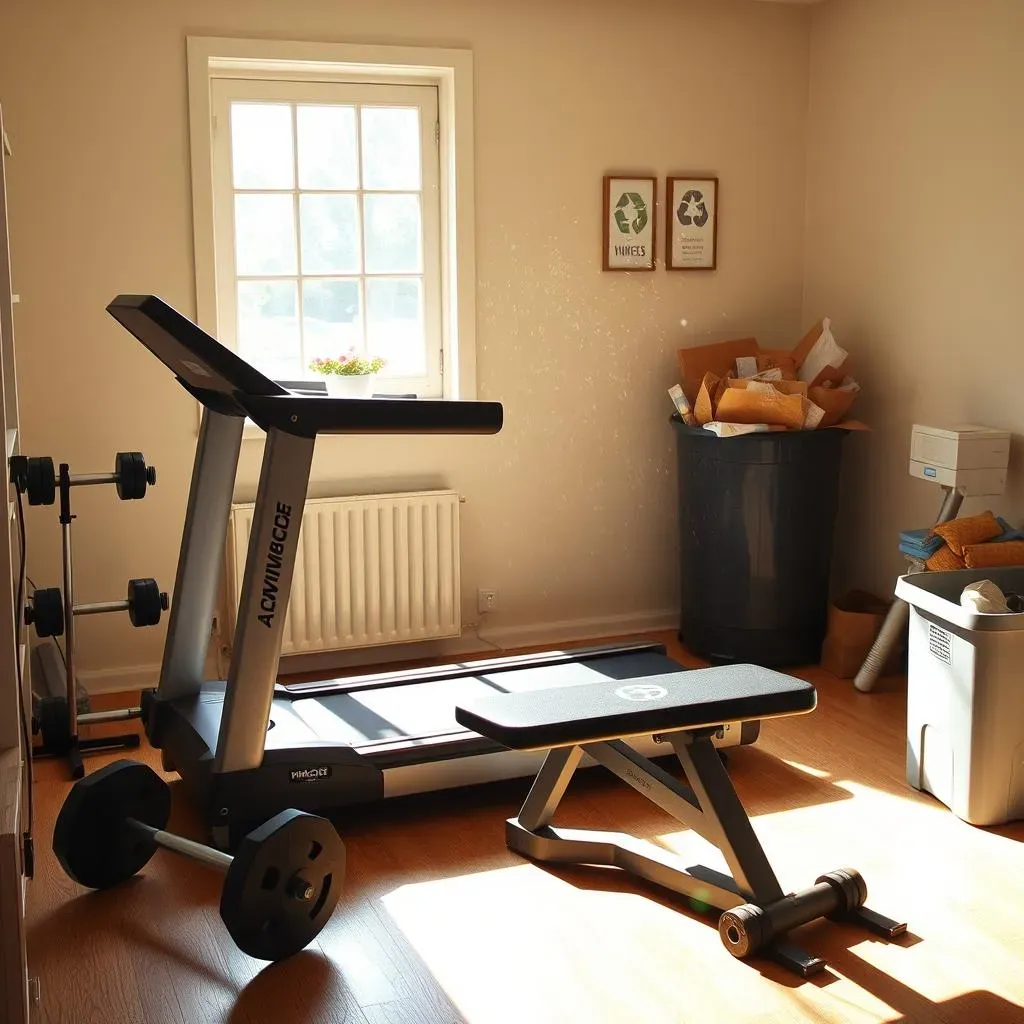
Savings That Make Sense
Let's be real, brand new gym equipment can cost a fortune. We're talking thousands of dollars for a decent treadmill or a complete weight set. That kind of investment isn't feasible for everyone, especially if you're just starting your fitness journey or have other financial priorities. This is where second hand home gym equipment for sale shines. You can snag high-quality gear at a fraction of the original price, freeing up your budget for other important things – like that protein powder you've been eyeing or a new pair of workout shoes.
Think of it this way: that top-of-the-line elliptical you've always wanted might be within reach if you're willing to buy it used. You could save hundreds, even thousands, of dollars, allowing you to create a well-equipped home gym without breaking the bank. It's a financially smart move that lets you prioritize your health without sacrificing your financial stability.
Real-Life Scenario
Imagine Sarah, a young professional who was eager to start working out from home. She quickly realized that buying all new equipment was beyond her budget. By exploring second hand options, she was able to purchase a treadmill, a set of dumbbells, and a weight bench for less than half the cost of buying them new. She now has a functional home gym that she loves, all thanks to the savings she found by buying used.
Going Green with Your Gains
Beyond the financial benefits, buying used gym equipment is also an environmentally responsible choice. Manufacturing new equipment requires significant resources and energy, contributing to carbon emissions and environmental degradation. By choosing second hand home gym equipment for sale, you're giving these items a second life, reducing the demand for new production and minimizing your environmental footprint.
It's a simple way to make a positive impact on the planet while pursuing your fitness goals. You're essentially recycling equipment, preventing it from ending up in a landfill and conserving valuable resources. It's a win-win situation: you get affordable gym gear, and the environment benefits too.
Consider this: a single treadmill requires a considerable amount of raw materials and energy to manufacture. By buying a used treadmill, you're reducing the need for those resources to be extracted and processed. It's a small but meaningful contribution to a more sustainable future.
Quality That Lasts
Many people assume that used equipment is automatically inferior to new equipment, but that's not always the case. In fact, a lot of gym equipment is built to last, and even after years of use, it can still be in excellent condition. Plus, you can often find high-end, commercial-grade equipment on the used market that's far more durable and reliable than the budget-friendly options you'd find new.
The key is to do your research and inspect the equipment carefully before you buy it. Look for signs of wear and tear, test the functionality of all moving parts, and ask questions about its history. With a little diligence, you can find second hand equipment that's just as good as new, if not better. You might even stumble upon a vintage piece that's built like a tank and will last for decades to come.
Factor | New Equipment | Second Hand Equipment |
|---|---|---|
Cost | Higher | Lower |
Environmental Impact | Higher | Lower |
Durability | Can vary, but often lower in budget models | Potentially higher with commercial-grade options |
Top Brands for Second Hand Home Gym Equipment
Top Brands for Second Hand Home Gym Equipment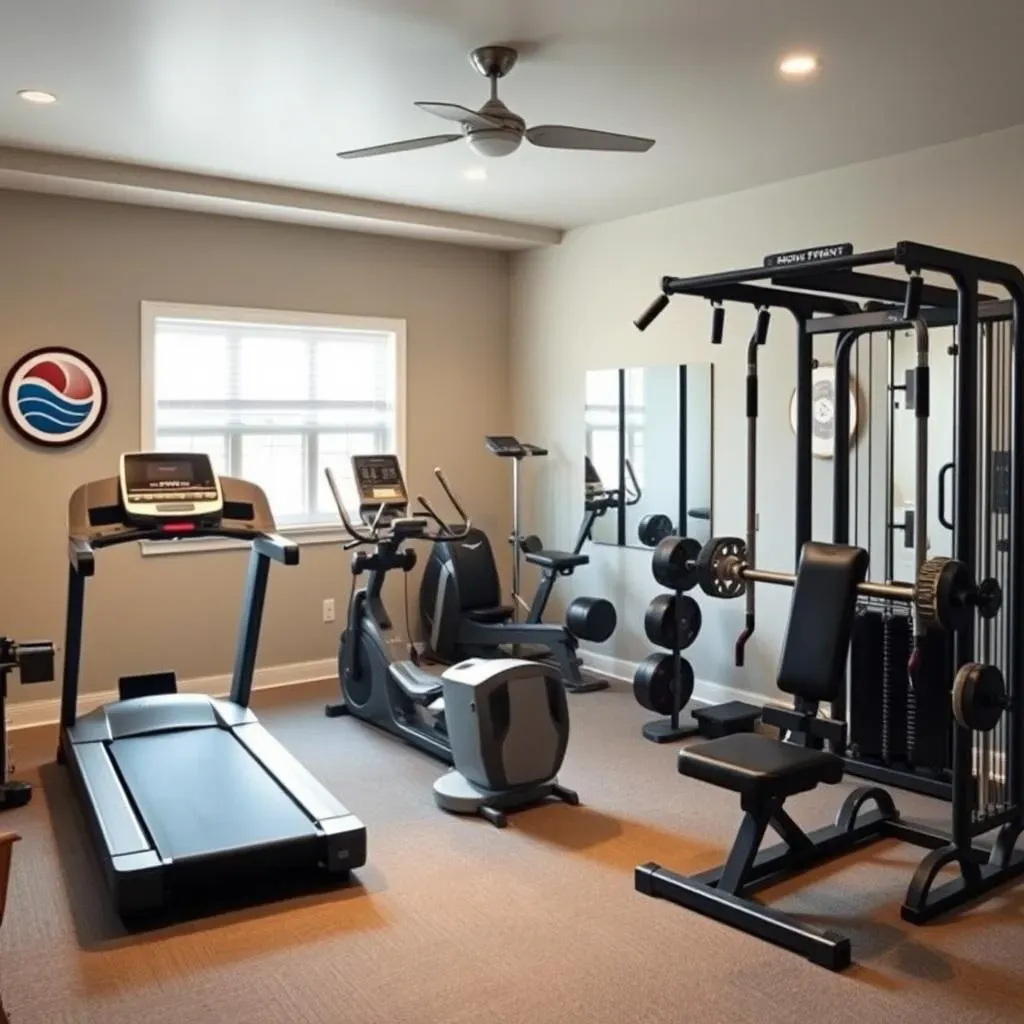
The Gold Standards: Cardio Kings and Queens
When it comes to cardio equipment, certain brands have consistently proven their reliability and performance. Life Fitness and Precor are two names that often top the list. These brands are known for their durable treadmills, ellipticals, and stationary bikes that can withstand years of heavy use. You'll often find these brands in commercial gyms, which speaks volumes about their build quality. Finding them on the second hand market is like striking gold – you're getting a piece of equipment that was designed to last.
Star Trac is another contender in the cardio arena, offering robust machines with user-friendly interfaces. These brands often come with advanced features like heart rate monitoring and pre-programmed workouts, making your fitness journey more engaging and effective. Keep an eye out for these names when browsing second hand listings – they're a solid investment for your home gym.
Concept2 rowing machines are simple, durable, and effective. Known for their reliability, they're a great addition to any home gym.
Strength Training Titans: Building Muscle on a Budget
For strength training, look for brands that prioritize durability and safety. Nautilus and Hammer Strength are well-regarded for their weight machines and benches. These brands are built to withstand heavy loads and provide a stable platform for your workouts. While they might be bulkier than some other options, their robust construction ensures they'll hold up to years of intense training.
Body Solid is another popular choice for home gym enthusiasts, offering a wide range of equipment, from weight sets to multi-gym systems. Their products are known for their versatility and affordability, making them a great option for those who want to create a comprehensive home gym without spending a fortune. Don't overlook brands like York Barbell for classic, no-nonsense weightlifting equipment that stands the test of time.
Brand | Equipment Type | Key Features |
|---|---|---|
Life Fitness | Cardio (Treadmills, Ellipticals, Bikes) | Durability, Advanced Features |
Precor | Cardio (Treadmills, Ellipticals) | Commercial Grade, Ergonomics |
Concept2 | Rower | Simple, Durable |
Nautilus | Strength (Weight Machines, Benches) | Heavy-Duty Construction, Stability |
Hammer Strength | Strength (Weight Machines) | Commercial Grade, Biomechanical Design |
Body Solid | Strength (Weight Sets, Multi-Gyms) | Versatility, Affordability |
Essential Checks Before Buying Used Gym Gear
Essential Checks Before Buying Used Gym Gear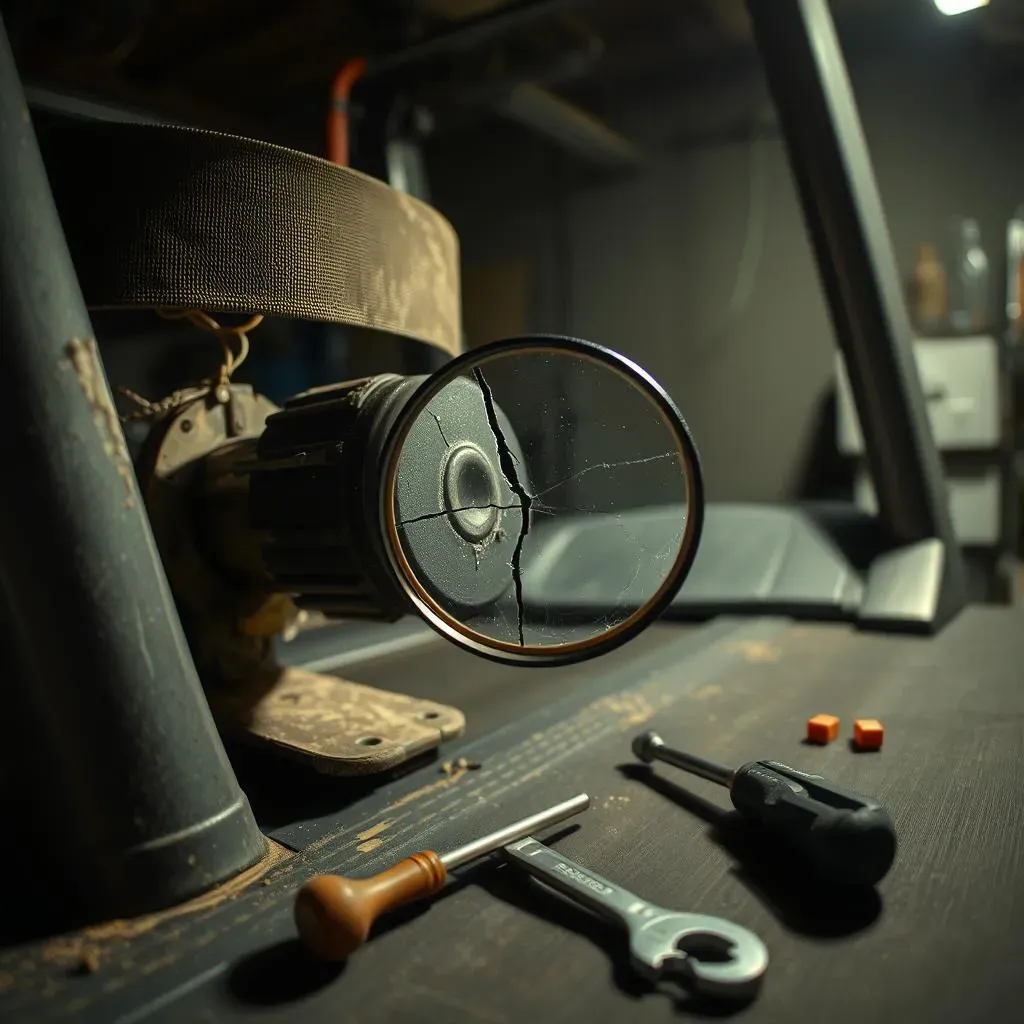
The Visual Inspection: Spotting Red Flags
Before you even think about handing over your hard-earned cash, give that second hand home gym equipment a thorough visual inspection. Look for the obvious signs of wear and tear: rust, cracks, frayed cables, and torn upholstery. These are all indicators that the equipment hasn't been well-maintained and may be nearing the end of its lifespan. Don't be afraid to get up close and personal – run your hands along the surfaces, check the welds, and inspect the moving parts. A little bit of detective work can save you a lot of headaches down the road. For example, on a treadmill, check the belt for wear and tear, and look underneath for dust and debris buildup which could indicate lack of maintenance.
Pay close attention to the frame of the equipment. Is it sturdy and level? Are there any signs of bending or warping? These could indicate that the equipment has been overloaded or improperly used. Also, be wary of any equipment that's been repainted or patched up. While it might look cosmetically appealing, it could be hiding underlying damage. Always ask the seller about the history of the equipment and any repairs that have been made. Honesty is key, and a reputable seller will be transparent about any known issues.
- Check for rust, cracks, and frayed cables.
- Inspect upholstery for tears and wear.
- Examine the frame for sturdiness and levelness.
- Ask about the equipment's history and repairs.
The Functionality Test: Putting It Through Its Paces
A visual inspection is a good start, but it's not enough. You need to put the equipment through its paces to ensure that it's functioning properly. For cardio equipment like treadmills and ellipticals, check the console to make sure all the buttons and displays are working. Test the speed and incline functions, and listen for any unusual noises. On weight machines, try out all the different weight settings and make sure the cables and pulleys are moving smoothly. If possible, bring a friend or workout buddy with you to help you test the equipment. A second pair of eyes (and ears) can be invaluable in spotting potential problems.
Don't be shy about asking the seller to demonstrate the equipment for you. A reputable seller should be happy to show you how it works and answer any questions you have. If they're hesitant or evasive, that's a red flag. Remember, you're making a significant investment, even if it's a used piece of equipment, so you have the right to thoroughly inspect and test it before you buy it.
Equipment Type | Functionality Test |
|---|---|
Treadmill | Test speed, incline, and console functions. Listen for unusual noises. |
Elliptical | Check resistance levels, stride length, and console functions. |
Weight Machine | Try all weight settings and ensure smooth cable/pulley movement. |
Setting Up Your Second Hand Home Gym: Tips and Tricks
Setting Up Your Second Hand Home Gym: Tips and Tricks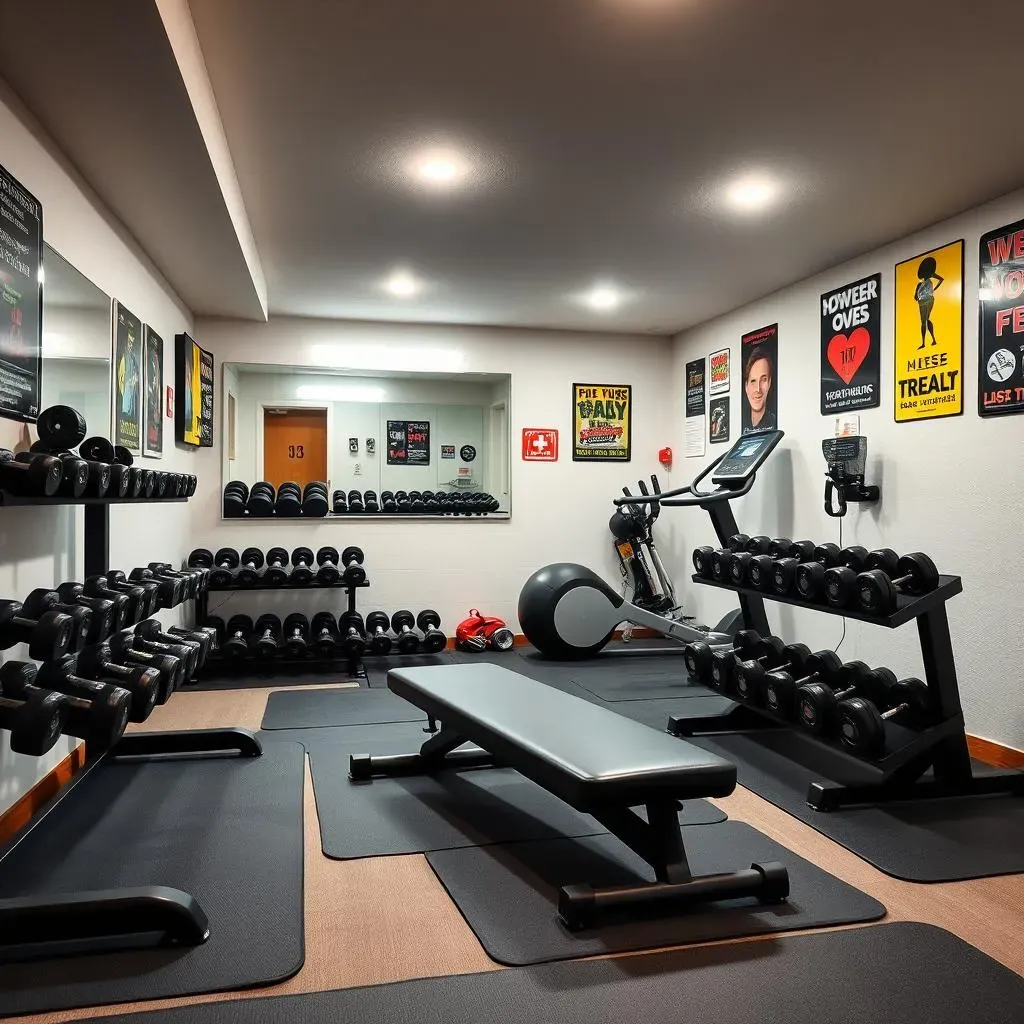
Space Planning: Maximize Your Workout Zone
Alright, you've scored some awesome second hand home gym equipment – now what? First things first: space. You gotta figure out where this stuff is going to live. Don't just cram it into a corner and hope for the best. Think about flow, safety, and functionality. Is there enough room to move freely around each piece of equipment? Can you perform exercises without bumping into walls or furniture? The last thing you want is to trip over a dumbbell mid-squat. Trust me, I've been there (almost!).
Consider the type of workouts you'll be doing. If you're into cardio, you'll need ample space for treadmills or ellipticals. Strength training requires room for weight benches, racks, and free weights. If you're tight on space, think vertically. Wall-mounted storage racks can be a lifesaver for organizing dumbbells, plates, and other accessories. Mirrors are also a great addition – not just for vanity, but for checking your form and ensuring you're performing exercises correctly. Good lighting is also essential for safety and motivation. Nobody wants to work out in a dimly lit dungeon.
- Measure your space accurately before buying equipment.
- Consider the types of workouts you'll be doing.
- Think vertically with wall-mounted storage.
- Add mirrors for form checks and motivation.
- Ensure adequate lighting for safety and visibility.
Safety First: Protecting Yourself and Your Equipment
so you've got your space all planned out – great! Now let's talk safety. This is non-negotiable. Before you even start using your second hand home gym equipment, give it a thorough once-over. Check all nuts and bolts to make sure they're tight. Lubricate any moving parts to ensure smooth operation. Replace any worn or damaged cables or belts. And for goodness sake, read the instruction manuals! I know, nobody likes reading manuals, but they contain important information about proper usage and maintenance.
Invest in some good quality flooring. Rubber mats are ideal for protecting your floors from damage and providing a stable surface for your workouts. They also help to absorb impact and reduce noise. Keep a first-aid kit handy for minor injuries. And most importantly, listen to your body. Don't push yourself too hard, especially when you're first starting out. Gradual progression is key to avoiding injuries and achieving long-term fitness success. Remember, it's a marathon, not a sprint!
Safety Tip | Description |
|---|---|
Inspect Equipment | Check nuts, bolts, cables, and belts regularly. |
Lubricate Moving Parts | Ensure smooth operation and prevent wear. |
Invest in Flooring | Rubber mats protect floors and provide a stable surface. |
Keep a First-Aid Kit | Be prepared for minor injuries. |
Listen to Your Body | Avoid overtraining and prioritize gradual progression. |
Where to Find Second Hand Home Gym Equipment for Sale
Where to Find Second Hand Home Gym Equipment for Sale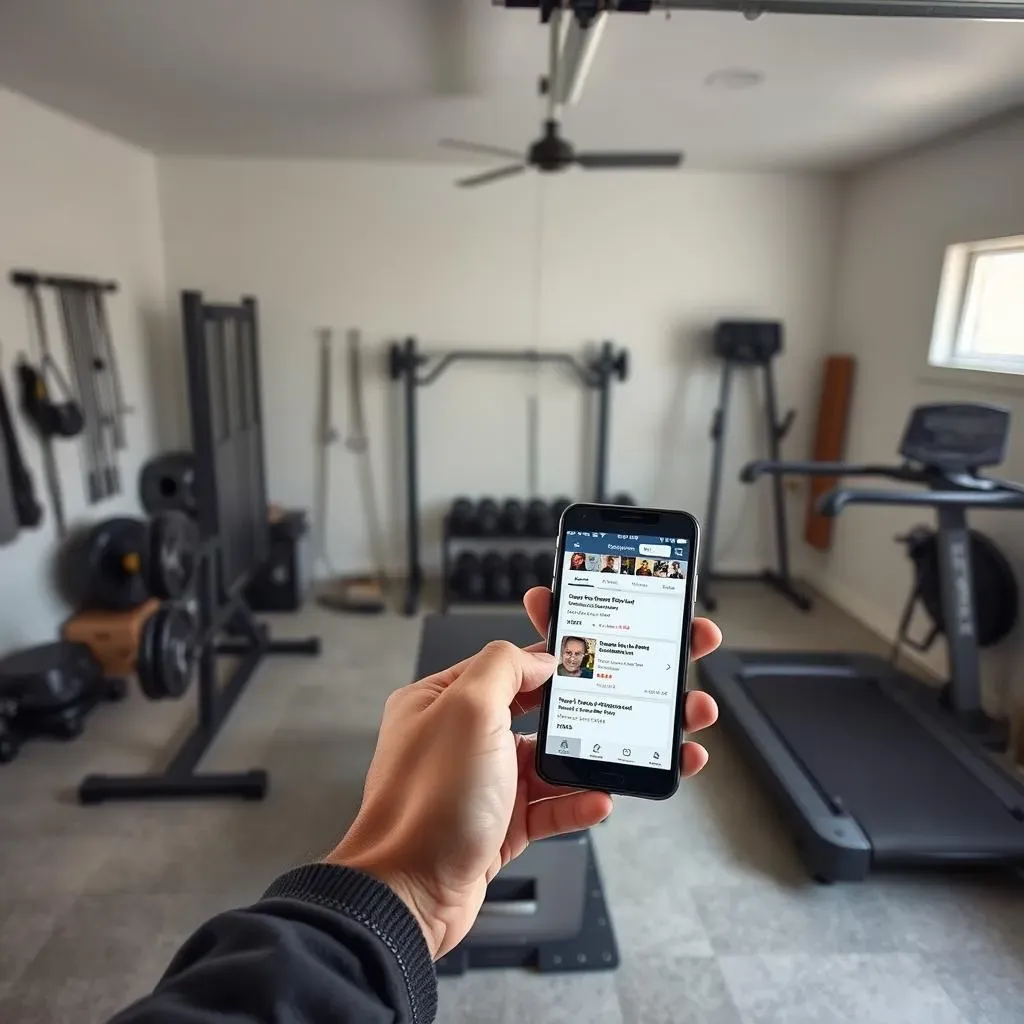
Online Marketplaces: Your Digital Treasure Trove
The internet is your best friend when hunting for second hand home gym equipment for sale. Websites like eBay, Craigslist, and Facebook Marketplace are teeming with listings from individuals and businesses looking to offload their used gear. These platforms offer a vast selection, ranging from basic weight sets to high-end cardio machines. However, it's crucial to exercise caution when buying from online marketplaces. Always thoroughly vet the seller, read reviews if available, and ask plenty of questions about the equipment's condition and history. If possible, arrange to inspect the equipment in person before making a purchase. Don't be afraid to negotiate the price – many sellers are willing to haggle, especially if the equipment has been listed for a while.
Pro Tip: Set up alerts on these platforms for specific keywords like "used treadmill" or "second hand weight bench." This way, you'll be notified as soon as new listings are posted, giving you a competitive edge in snagging the best deals. Also, be sure to check local online classifieds and community groups – you might find hidden gems right in your own neighborhood.
Local Gyms and Fitness Centers: A Potential Goldmine
Believe it or not, local gyms and fitness centers can be a surprisingly good source for second hand home gym equipment for sale. Gyms often upgrade their equipment every few years to stay competitive, and they typically sell off their old machines at discounted prices. Reach out to gyms in your area and inquire about their equipment replacement schedules. You might be able to snag a commercial-grade treadmill or weight machine for a fraction of its original cost. Even if they don't have equipment for sale at the moment, they might be able to refer you to other gyms or fitness centers that are looking to offload their used gear.
Another advantage of buying from a gym is that the equipment is usually well-maintained and in good working condition. Gyms have a vested interest in keeping their equipment in tip-top shape, so you can be reasonably confident that you're getting a reliable piece of machinery. Plus, you might be able to negotiate a warranty or maintenance agreement, providing you with added peace of mind.
Source | Pros | Cons |
|---|---|---|
Online Marketplaces | Vast selection, competitive prices | Requires careful vetting, potential for scams |
Local Gyms | Well-maintained equipment, potential for warranties | Limited selection, may require transportation |
Fitness Equipment Retailers | Certified Refurbished, warranty | More expensive than private sellers |
Fitness Equipment Retailers: Certified Refurbished Options
Don't overlook fitness equipment retailers that specialize in used or refurbished equipment. These companies typically inspect, repair, and certify used equipment to ensure it meets certain standards of quality and safety. While the prices might be slightly higher than those you'd find on online marketplaces or from individual sellers, you're getting the added assurance that the equipment has been thoroughly vetted and is in good working condition. Plus, these retailers often offer warranties or return policies, providing you with added protection in case something goes wrong.
Many of these retailers also offer financing options, making it easier to afford the equipment you need. They might also be able to assist with delivery and installation, saving you the hassle of transporting and setting up the equipment yourself. It's worth checking out these retailers to see what they have to offer – you might be surprised at the quality and affordability of their certified refurbished equipment.
Conclusion: Your Path to Affordable Fitness
Investing in your health doesn't have to mean breaking the bank. As we've explored, the world of second hand home gym equipment for sale offers a fantastic opportunity to create a personalized workout space without the hefty price tag of brand-new gear. By doing your research, knowing what to look for, and following our expert tips, you can find high-quality, reliable equipment that will help you achieve your fitness goals. So, take the plunge, explore the options, and get ready to sweat – your dream home gym is closer than you think!